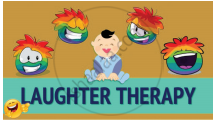Advertisements
Advertisements
प्रश्न
Answer the following question in 120-150 words:
How does Dr. Cuss's encounter with Griffin end in a disaster?
उत्तर
The stranger had no wish to entertain nosy neighbourhood people, he did not speak a word and simply glared at Mr Cuss for intruding upon his private space. The stranger had merely sniffed and kept on sniffing all the time that Mr Cuss was present. Any question put to him succeeded in enraging him further but when he accidentally revealed his empty sleeve, there was a moment of confusion which the stranger and Mr Cuss shared before the former turned the latter out of his room. Mr. Cuss was visibly shaken from this encounter. However, what is clear from this encounter is that the stranger was in a perturbed state of mind, he was working on a problem whose solution seemed to elude him constantly.
APPEARS IN
संबंधित प्रश्न
Attempt a character sketch of Squire Cass.
Which language do you think the author and his grandmother used while talking to each other?
Notice the kind of English Tsetan uses while talking to the author. How do you think he picked it up?
You will probably agree that this story does not have breathless adventure and exciting action. Then what in your opinion makes it interesting?
Explain the line:
Within a week it sickened to a raging fever and its pulse went up to a hundred and fifty in the shade.
How does the poem capture the elusive nature of the peacock?
What causes the element of surprise when the child comes on the scene of 'adult reconciling'?
Read the story and complete the following.
At first, Revathi’s plants did not look normal and healthy because, ____________.
Pick out a word from the poem to complete the sentence meaningfully.
She ______ (bargained) with the hawker to reduce the price.
You will come across many blogs written by famous personalities on different topics and issues. Read and make a list of at least ten blogs available on the internet. Read and summarise a blog and present it before the class.
| Sr.No. | The topic of the Blog | Name of the Blogger |
| 1. | Don’t teach kids how to read, teach them why. (https://www.teachthought.com/literacy stop-teaching-kids-how-to-read-reading-practice/) | Terry Heick |
| 2. | ||
| 3. | ||
| 4. | ||
| 5. |
Read the description of the Kabaddi match and do the following:
Choose any one event and draw a diagram to show what happened.
Define drama.
Read the poem: ‘Home they brought her warrior dead’ by Alfred Lord Tennyson.
There were no human settlements on the moon.
From the passage, find all the words and phrases used to describe the ‘monster’.
Would you like to be a netizen?
Who is wise according to you?
What is the ‘breath of life’?
The eggs of an Olive Ridley are in the shape and size of a cricket ball.
A turtle’s flippers help it to ______.
Read the lines and answer the question given below.
Each a glimpse and gone forever;
a. What is ‘each’ over here? Why is it gone forever?
He offered _______ to his daughters.
_________ is the memorial for the soldiers.
Why was the fish floating on top?
Choose the correct answer.

Mostly piggy banks look like______.
Write the rhyming word.
larder- ______.
How did Alice reach Wonderland?
When should we not water the plants?
Now, read the following passage on “Laughter Therapy” and answer the questions that follow.

- Laughing is an excellent way to reduce stress in our lives; it can help you to cope with and survive a stressful life. Laughter provides full-scale support for your muscles and unleashes a rush of stress-busting endorphins. Since our bodies cannot distinguish between real and fake laughter, anything that makes you giggle will have a positive impact.
- Laughter Therapy aims to get people laughing, in groups and individual sessions and can help reduce stress, make people and employees happier and more committed, as well as improve their interpersonal skills. This laughter comes from the body and not the mind.
- Laughter Yoga (Hasya yoga) is a practice involving prolonged voluntary laughter. It aims to get people laughing in groups. It is practiced in the early mornings in open-parks. It has been made popular as an exercise routine developed by Indian physician Madan Kataria, who writes about the practice in his 2002 book ‘Laugh for no reason'. Laughter Yoga is based on the belief that voluntary laughter provides the same physiological as well as psychological benefits as spontaneous laughter.
- Laughter yoga session may start with gentle warm-up techniques which include stretching, chanting, clapping, eye contact and body movements to help break down inhibitions and encourage a sense of playfulness. Moreover, laughter is the best medicine. Breathing exercises are used to prepare the lungs for laughter followed by a series of laughter exercises that combine a method of acting and visualization techniques. Twenty minutes of laughter is sufficient to augment physiological development.
- A handful of small-scale scientific studies have indicated that laughter yoga has some medically beneficial effects, including cardiovascular health and mood. This therapy has proved to be good for depressed patients. This laughter therapy also plays a crucial role in social bonding.
Answer the following.
a. How does laughter help one to cope with stress?
b. Which word in the text (para 2) means the same as ‘dedicated'?
c. Why do you think voluntary laughter provides the same physiological as well as psychological benefits as spontaneous laughter?
d. ‘Laughter is the best medicine’. Explain.
e. Given below is a set of activities. Which of these are followed in the ‘Laughter Yoga’ technique?
- sitting on the ground with legs crossed
- body movements
- clapping
- closed eyes
- breathing exercises
- chanting
- stretching of arms and legs
- bending backwards
- running/jogging
- eye contact
f. ‘Laughter therapy also plays a crucial role in social bonding’. How?
